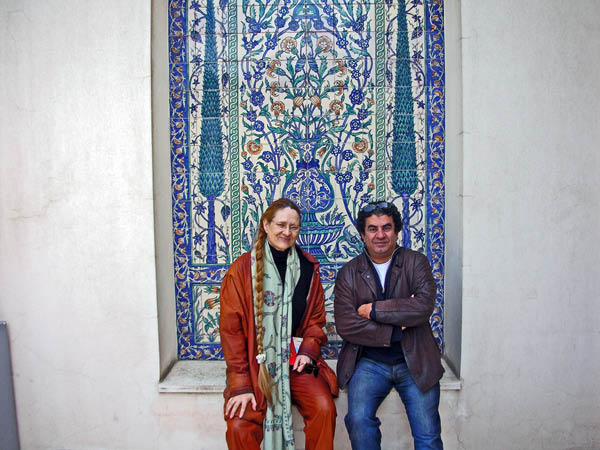Home | Research & Intervention | World Architecture for Equal Dignity | Hassan Fathy
Hassan Fathy
by Ishmael Jay Taylor, 2004
Hassan Fathy, in the course of his long career, broke new ground and returned to materials and methods rooted in antiquity and the soil of his native Egypt. The 1966 apperance of his book, Construire avec le peuple, made him one of the fathers of sustainable technology. Steel, concrete, aluminum and plate glass are materials of modern architecture. Along with lumber they account for a large part of construction. However, they are expensive in the third world and with transport exact a heavy penalty on the environment. Prof. Hassan bequeathed to us a large corpus of works. A cadre of enthusiastic followers have taken up his mantle. His designs may yet become popular with his intended constituency when they realise how Hassan Fathy empowered us by showing how to transform adobe, a humble material, into arches, vaults and domes- the stuff of dreams.
Links:
• Gamal Amer is a disciple of famed Egyptian architect Hassan Fathi, known to the younger generation of architects simply as Hassan Bey. Gamal Amer has built the Al-Fustat Ceramics Center in Old Cairo. Domes and vaults form a spacious and airy interior, which is adorned with arabesque doors, windows and furnishings, and a mosaic fountain.
These pictures were taken on Tuesday, 16th January 2007. Please click here or on the pictures to see more photos. |
|---|
• Simone Swan has received recognition for initiating, funding, and managing a range of endeavors concerned with architectural and environmental concepts. Early in her career Simone established Withers Swan, a public relations agency in New York committed to public information on art, architecture, and the environment. Clients were museums and universities. She later served as founding director of the Menil Foundation where, beyond art endeavors, she initiated energy conservation and alternative energy programs.
In the 1970s, Simone apprenticed to Hassan Fathy, renowned environmental architect and author of Architecture for the Poor and Natural Energy and Vernacular Architecture, inspired by his use of earthen materials and his interest in reviving indigenous building techniques for owner-built cooperative housing.
In the late 1990s, Simone established the Adobe Alliance in the Big Bend area of West Texas in order to realize low-cost housing in the border region. After much local research on environmental climate and culture, she decided to target Presidio County, with a 37% unemployment rate. The Alliance has since constructed houses on both sides of the border that demonstrate the innovative use of earthen materials to create a new building standard for environmentally compatible, sustainable homes and communities.
Simone dreams of the day when the group erects a billboard advertising Adobe Immobile Homes in Presidio where trailers abound. She also looks forward to building in New Mexico or wherever invited, like South Africa, Namibia, Afghanistan, Yemen, and any desert climate.
The Adobe Alliance is a non-profit group dedicated to:
helping communities apply cooperative building techniques in earth architecture;
educate groups in fulfilling the widespread need for low cost, salubrious, energy efficient, sustainable housing;
enhance rather than blemish landscapes by designing solid contemporary structures of simple design which respect local climatic, environmental and cultural traditions
within desert environments.
• Saudi Aramco World has a searchable index: the string "hassan fathy" will find other articles
• An Indian site with many photographs of construction methods
• http://www.chez.com/clady/hassanfathy.html
• http://www.uia-architectes.org/ texte/france/1av1a.html
• Contains a good review of James Steele's biography of the architect
• Contains 151 images of the New Gourna Village
• Fine renderings

